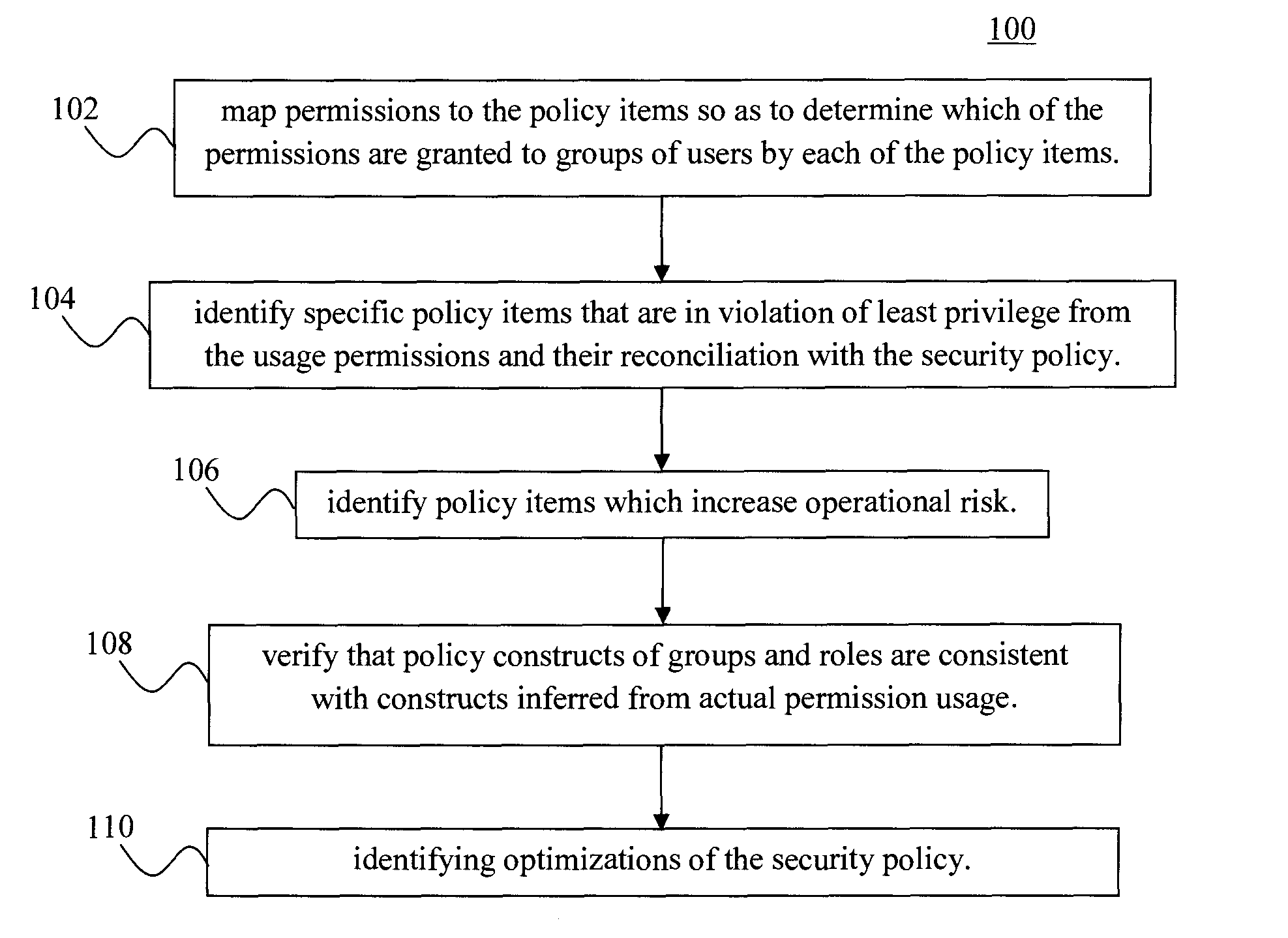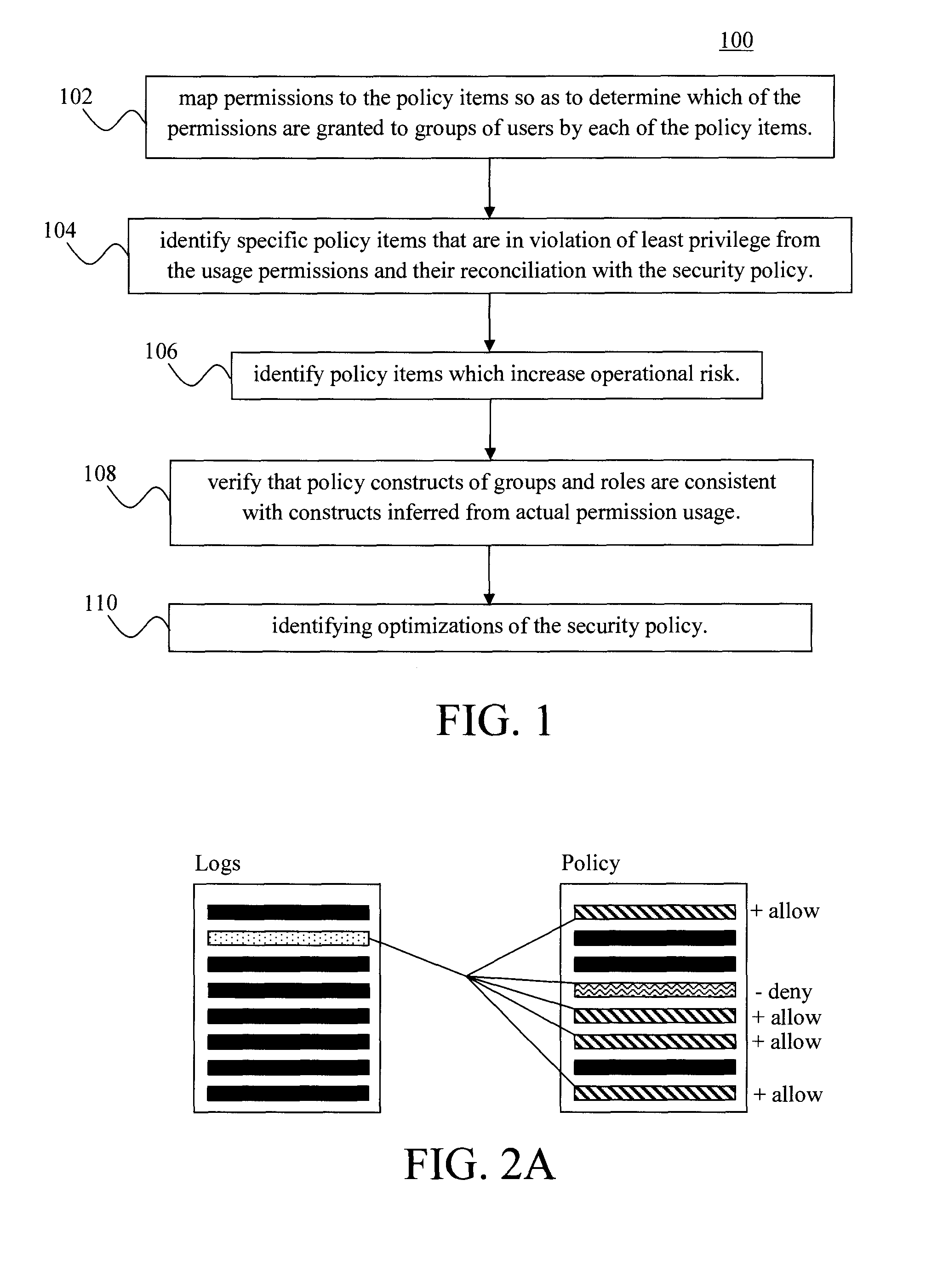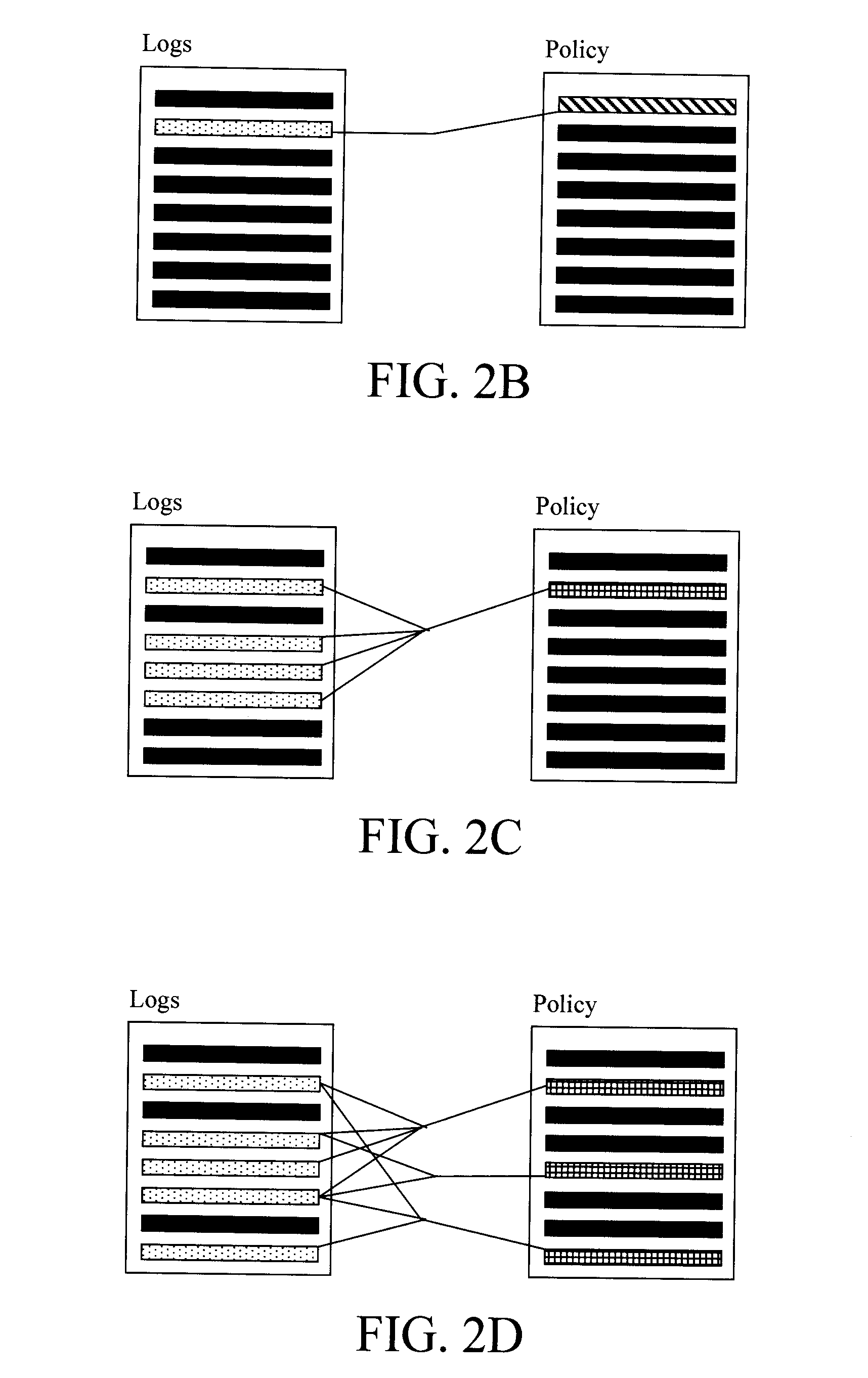Techniques for Reconciling Permission Usage with Security Policy for Policy Optimization and Monitoring Continuous Compliance
a technology of permission usage and security policy, applied in the field of security policy analysis, can solve the problems of increasing security risks, increasing security risks, and increasing the number of policies, and achieve the effect of reducing risk and increasing operational risk
- Summary
- Abstract
- Description
- Claims
- Application Information
AI Technical Summary
Benefits of technology
Problems solved by technology
Method used
Image
Examples
Embodiment Construction
[0021]Provided herein are techniques for reconciling the usage of permissions or entitlements to an application or computer systems with the goals of optimizing the security policy to best reflect how permissions are actually being used as well as to continuously monitor the usage to ensure that it complies with the intended security policy. Policies should remain up-to-date, maintaining least privilege, and using unambiguous constructs that reduce administrative stress. This principle of least privilege is defined by J. H. Saltzer et al., “The Protection of Information in Computer Systems,” Proceedings of the IEEE, 63(9):1278-1308 (September 1975) (hereinafter “Saltzer”), the entire contents of which are incorporated by reference herein. This principle states that users are given only the minimum privileges that are required to execute their functions. Saltzer argues that a least privileged user, combined with fail-safe defaults, e.g., default deny, lead to increased security. A nu...
PUM
 Login to View More
Login to View More Abstract
Description
Claims
Application Information
 Login to View More
Login to View More - R&D
- Intellectual Property
- Life Sciences
- Materials
- Tech Scout
- Unparalleled Data Quality
- Higher Quality Content
- 60% Fewer Hallucinations
Browse by: Latest US Patents, China's latest patents, Technical Efficacy Thesaurus, Application Domain, Technology Topic, Popular Technical Reports.
© 2025 PatSnap. All rights reserved.Legal|Privacy policy|Modern Slavery Act Transparency Statement|Sitemap|About US| Contact US: help@patsnap.com



